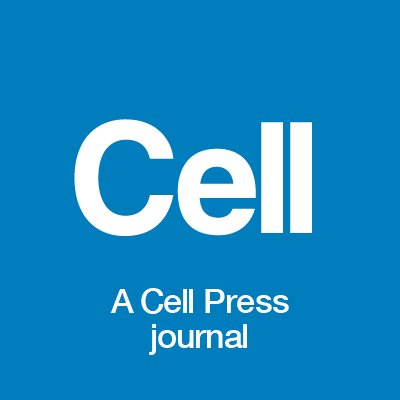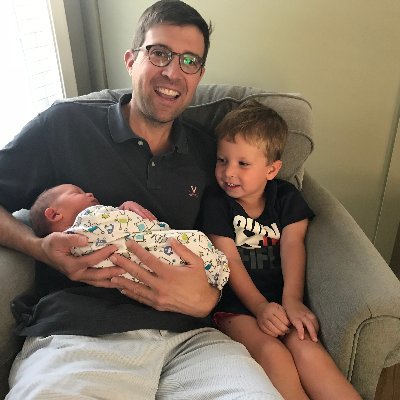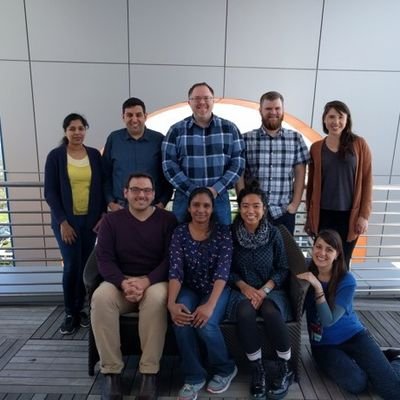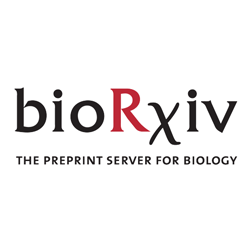
Siling Du
@DuSiling
Followers
435
Following
489
Media
22
Statuses
918
Neuroimmu-enthusiast🧐GR6 IMM student in the Kipnis lab & Colonna lab at WUSTL| Interested in brain macrophages & neurodegeneration| Re-tweet to learn
St Louis, MO
Joined December 2018
#RTN2025 was such a blast. Amazing meeting, with tons of inspiring science and conversation. And an amazing cohort of next gen scientists to share some fun moments with @DuSiling @JPChadarevian
0
1
4
New issue alert👉 https://t.co/uP2kI6DRjj On the cover: Kothari et al. and Mamuladze et al. characterize the role of meningeal mast cells in two distinct pathologies, stroke and meningitis. The image depicts meningeal mast cells surrounding the brain, as stars surround the Earth
3
21
86
Submit your abstract to the 2026 #Lymphatics #GRC (March 1st – 6th) and #GRS (for junior investigators, Feb 28th – March 1st) which I will be chairing. The speaker lineup is fantastic! Hurry up before it will be oversubscribed! https://t.co/2wtAYFTlyM
@GordonConf
0
5
19
Multicolor fate mapping of microglia reveals polyclonal proliferation, heterogeneity, and cell-cell interactions after ischemic stroke in mice | Nature Communications
nature.com
Nature Communications - Microglia proliferate in response to ischemic stroke. Here, the authors show the clonal dynamics of this proliferation and how clonality contributes to microglial...
0
4
18
Repeated head trauma causes neuron loss and inflammation in young athletes @Nature
https://t.co/urOSWYmntP
nature.com
Nature - Repetitive head impacts from contact sports are associated with brain inflammation, vascular damage and neuron loss that are independent of hyperphosphorylated tau pathology.
1
41
115
🧵1/8 Happy to share my new preprint “ID2 secures cDC1 specification by antagonizing E proteins at a pleiotropic Zeb2 enhancer.” I resolved why ID2 is essential for cDC1 lineage specification and uncovered a new paradigm of enhancers. Read here:
researchsquare.com
The transcriptional regulator ID2 is required for type 1 classical dendritic cell (cDC1) specification, yet the mechanism has remained obscure. We previously identified the Zeb2 -165-kb enhancer as...
1
7
16
I'm excited that @Jjiyeon_lee's 2nd paper from the lab is out in @NatureAging. We found that the circadian gene REV-ERBalpha regulates brain NAD+ by controlling CD38 in astrocytes. REV-ERB KO or pharmacologic inhibition mitigates tau pathology in mice.
nature.com
Nature Aging - Lee et al. show that the circadian clock protein REV-ERBα controls brain NAD+ levels by regulating the NAD+-consuming enzyme CD38. Global or astrocytic REV-ERBα deletion or...
2
26
98
Early horse riders selected a rare mutation in a single gene (GSDMC) to enhance rideability @ScienceMagazine 🇨🇳🇫🇷 https://t.co/oku3vhw4gy
https://t.co/otMqxkkpXM
1
4
15
Thrilled to share our new paper in @ScienceMagazine ! We identify septal LYVE1⁺ adipose macrophages (sATMs) as niche signals that control stem cell fate, restrain beiging & shape obesity susceptibility. Team effort with @FGinhoux and collaborators. https://t.co/mVWJ451FPQ
science.org
Tissue macrophages reside in anatomically distinct subtissular niches that shape their identity and function. In white adipose tissue (WAT), we identified three macrophage populations with distinct...
10
34
132
Maternal stress triggers early-life eczema through fetal mast cell programming. @Nature
https://t.co/mA25MStk7S
1
45
214
If you are looking for a great read during your journey to @iuis_online Congress, take a peek at this review from @MatthiasNahrend, @Fginhoux and @SwirskiLab in @ScienceMagazine that explores the role of immune cells beyond host defence. https://t.co/OfNT9Nyqki
2
121
433
Mast cells regulate the brain-dura interface and CSF dynamics @CellCellPress
cell.com
Dural mast cells control cerebrospinal fluid dynamics at critical brain-dura interfaces, specifically arachnoid cuff exit points. Their activation limits pathogen brain entry via histamine-induced...
0
21
76
Excited to share this new work from our lab, led by an exceptional graduate student, Tornike Mamuladze (@tornikemamu), on the role of meningeal mast cells in regulation of brain/dura access points, with implications to CSF flow dynamics and meningitis || https://t.co/DXnOZ8TZhb
9
22
102
#aging #immune_aging NEW PREPRINT FROM Artyomov&Randolph labs: How mouse age-associated GZMK+ CD8 Taa cells develop and what are correct surface markers for them https://t.co/iofWCQ9vxC Among other things we - Using OT1-Rag2ko mice explicitly show the TCR dependence and yet
biorxiv.org
Aging profoundly reshapes the immune cell landscape, with particularly strong effects on CD8+ T cells, including a marked decline in naïve cells and the emergence of age-associated GZMK+ CD8+ T cells...
0
18
58
Proud to share @niseto’s (new PI @TheCrick) paper: As a postdoc (@CSHL/@HopkinsMedicine), he found #NETs in necrotic tumors—I shrugged. But he looked closer: NETs block tumor vessel perfusion, causing necrosis, hypoxia, EMT & #Metastasis. https://t.co/gsaUTA1dfw
@JHU_BDP @Nature
nature.com
Nature - Neutrophils actively induce tumour necrosis, driving vascular occlusion, pleomorphic necrosis and metastasis.
17
63
223
Using newly developed mouse models and a microglia replacement strategy, researchers in Science show that bone marrow transplantation could be used as an effective therapy for ALSP, a rare and fatal neurodegenerative disease. 📄: https://t.co/7MAwzJGc5s
#SciencePerspective:
5
27
112
Replacing microglia to treat a brain disease | Science
science.org
Swapping out the brain’s immune cells can slow progression of a devastating neurological disease
1
9
42
Check out Research Briefing for our recent paper in Nature Immunology @DuSiling
https://t.co/UjsyIt79Vi
nature.com
Nature Immunology - We show that mutations in the CSF1R gene, which cause the rare neurodegenerative disease ALSP, lead to the loss and abnormal activation of microglia. This triggers glial stress...
1
7
48

























